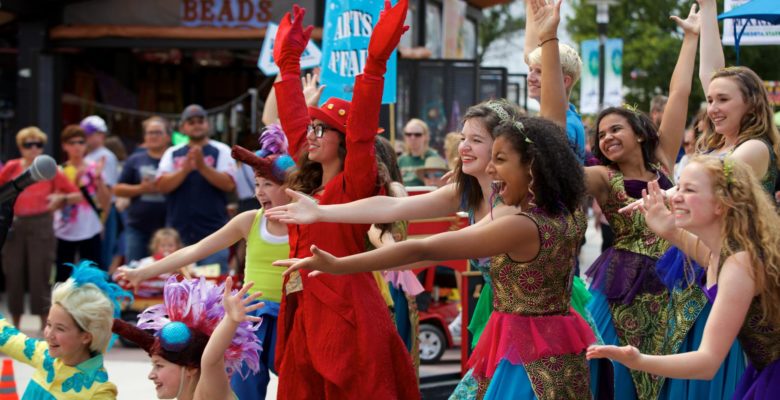Through the support of our Friends of the Fair, special project and program area donors, volunteers and Taste of the Fair guests, grants from the Foundation to the State Fair have funded projects and programs across the fairgrounds and all five of our priority areas! Together, we’ve made an impact on the future of the fair!
Foundation donors have supported:
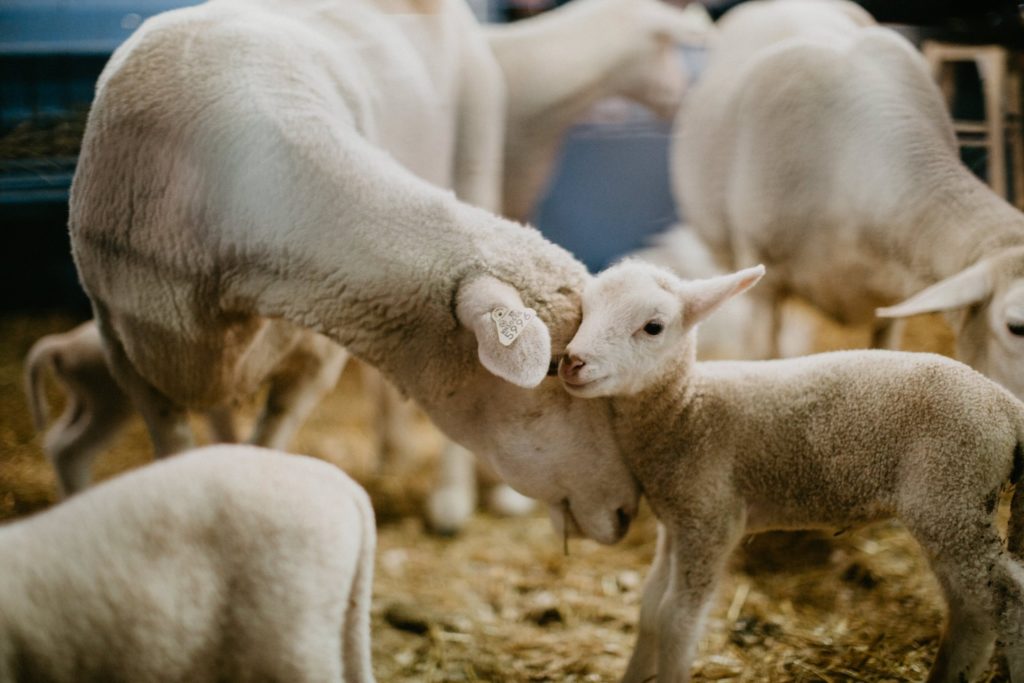
Agricultural Education
Robert A. Christensen Pavilion
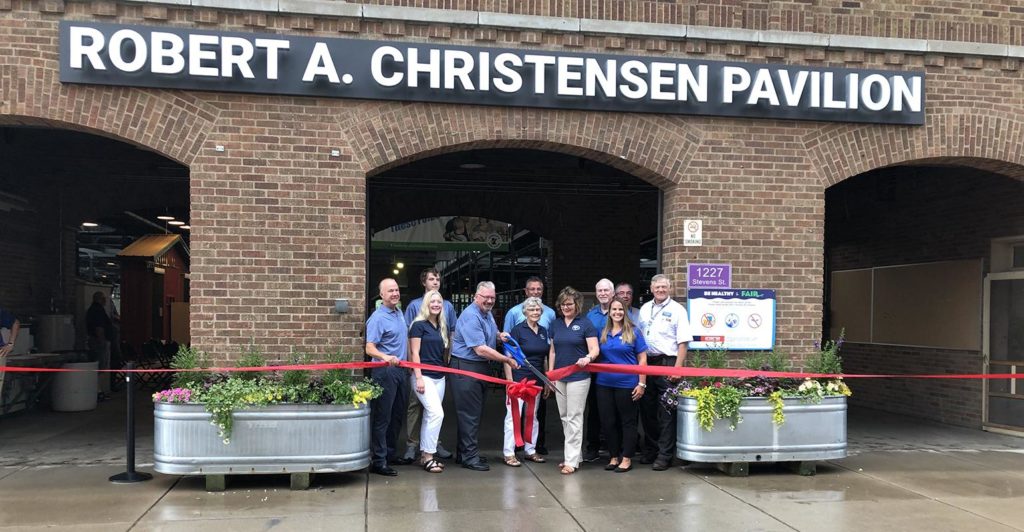
The swine barn at the Minnesota State Fairgrounds has played an integral role in bringing together swine industry leaders, thousands of 4-H and FFA members, open-class exhibitors, and millions of fair guests. With over 1,800 swine exhibited during the 12-day State Fair, the Swine Barn Improvement Campaign presents an unparalleled opportunity to build on the generations-old tradition of showing swine and using the iconic swine barn to showcase the best in our state’s agriculture. Now named the Robert A. Christensen Pavilion in honor of Christensen Farms founder and swine industry visionary Bob Christensen, gifts to the campaign are funding significant capital improvements to the swine facility over several years to improve biosecurity, ventilation, lighting, technology and more.
CHS Miracle of Birth and FFA Chapter House & Leadership Center
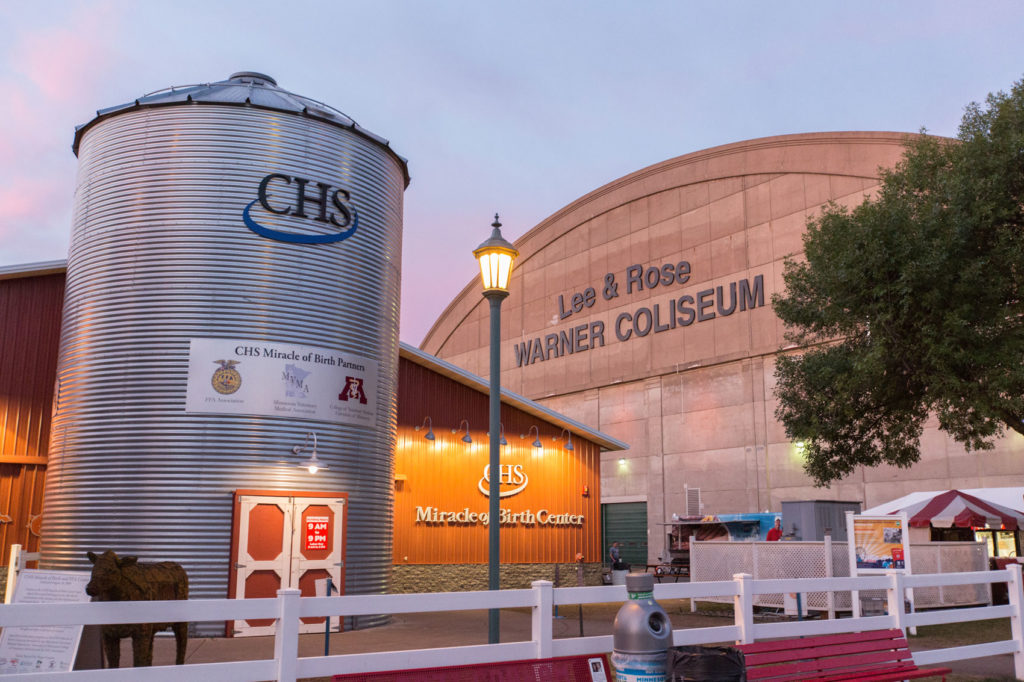
After high demand from fairgoers, the Foundation raised funds to renovate the facility in 2006. The CHS Miracle of Birth Center is 18,000 square feet—nearly three times the size of the previous birthing barn! This addition allowed more visitors to learn about animal agriculture, veterinary science and the animal birthing process. The facility also incorporates renewable solar energy. About a million visitors each year see 150-200 calves, goats, piglets and lambs being born during the run of the fair.
Compeer Arena
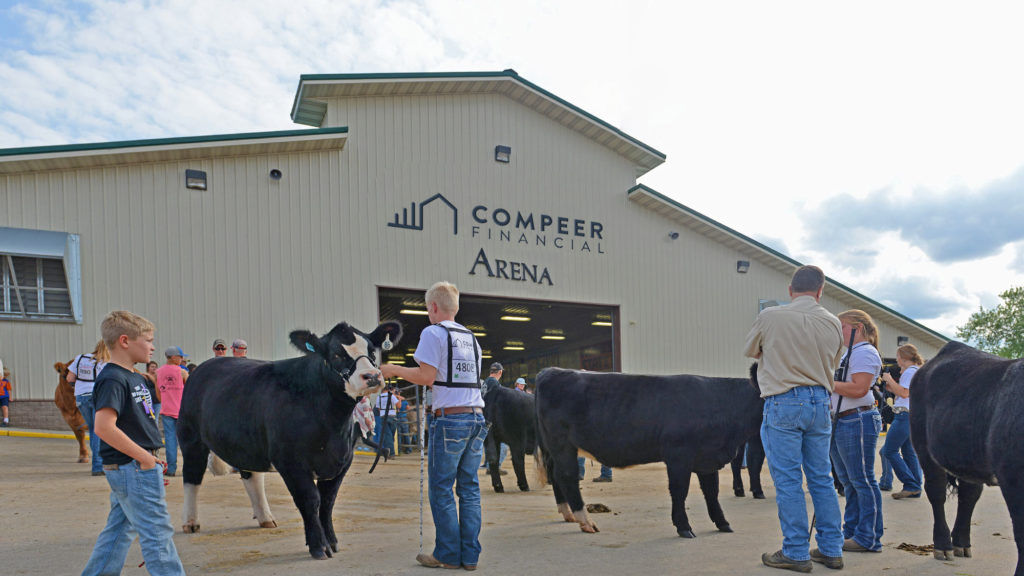
In 2012, several hundred Foundation donors supported the construction of Compeer Arena, a 27,000 square-foot equine and livestock facility replacing the 1960s Judging Arena and Annex. This facility is where the State Fair and others host equine shows and livestock competitions with significant participation from 4-H and FFA chapters. The naming honors went to Compeer (formerly AgStar Financial Services) for their major contribution and leadership in agriculture. The completion of this project builds on our history of support for agriculture at the State Fair. The agricultural community has shown generous support for State Fair programs and facilities that serve to connect today’s consumers with agriculture and develop youth leadership.
Agriculture Horticulture Building Renovation
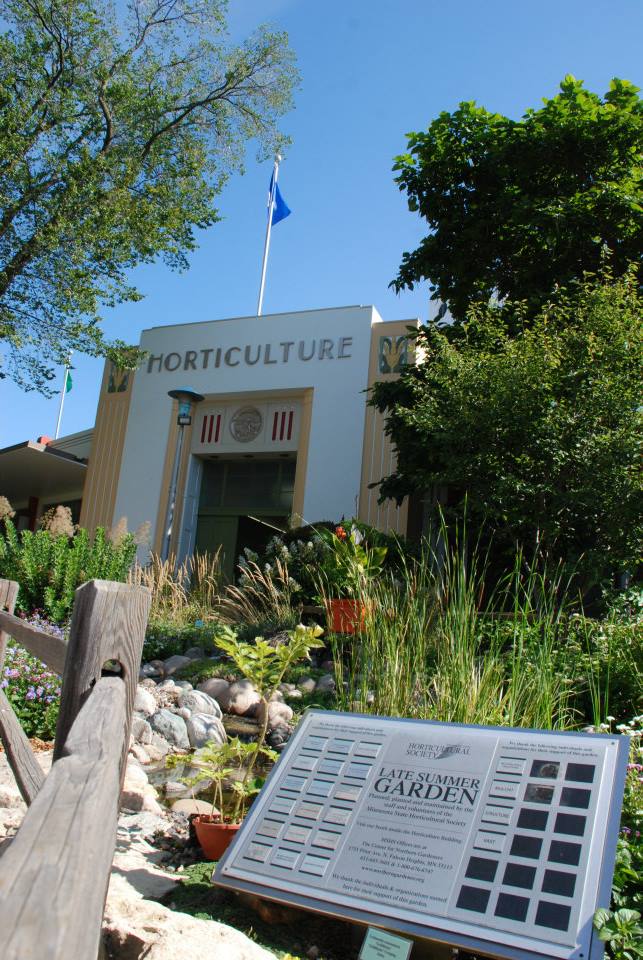
The Agriculture Horticulture Building is an Art Deco classic structure from the 1940s. This project included the need for environmentally efficient lighting, window replacement for natural light, new display housing, interior painting and improvements to the supporting facilities for this 60,000 square-foot public space. The building design includes exterior relief art, a central rotunda with a natural light tower, eight exhibit rooms and eight street-to-rotunda access halls – commonly referred to as the “Ag Hort Spokes.”
Our State Fair agricultural and horticultural programs are as popular as ever and reflect a breadth of involvement. We have outstanding competitions and displays, including holiday trees, honey and bee culture, farm crops, flowers, fruits and wines, vegetables and potatoes.
Moo Booth
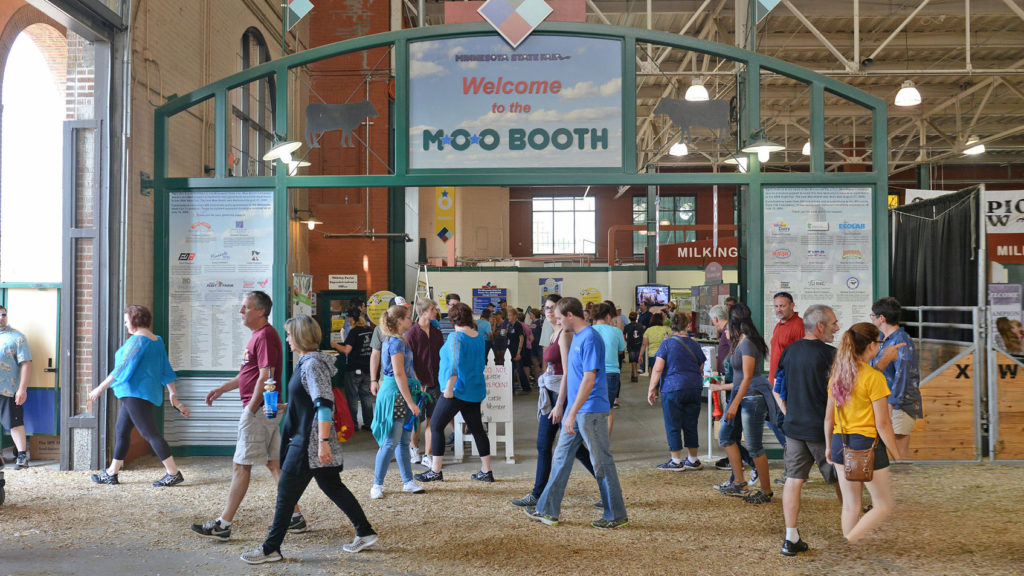
This exhibit shows consumers how cattle are cared for, the biology of cattle, products that cattle provide, how food gets from the farm to our table, the economic impact of the cattle industry, the life of today’s cattle producer, and new technologies in the livestock industry. The exhibit received major updates in 2009 with the support of generous donors.
Bee Programming
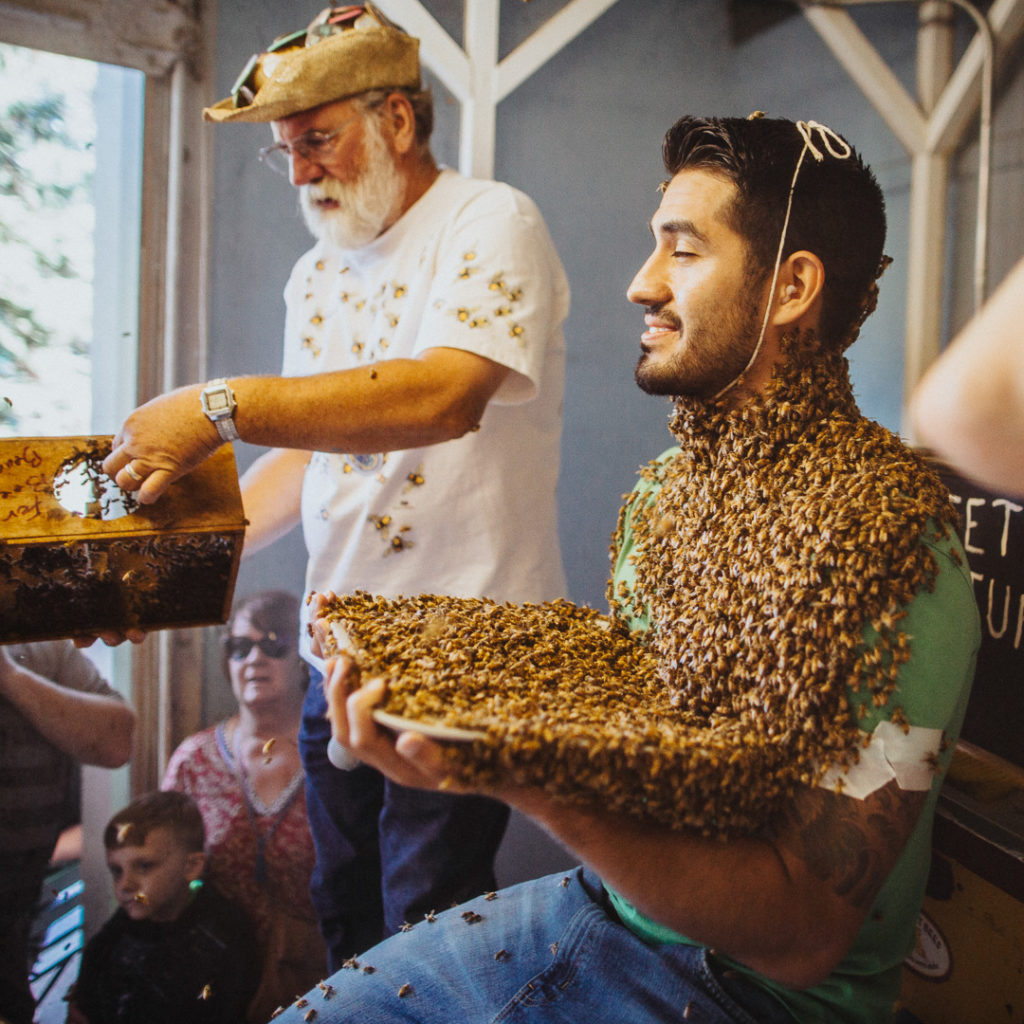
Inside of the Agriculture Horticulture Building, fair guests have the opportunity to engage with a program that gets a lot of buzz: Bee & Honey. This popular exhibition and demonstration area has received support from Foundation donors, including Dick and Peggy Lidstad who established an endowed fund for Bee Programming — supporting speakers, exhibits, demonstrations and children’s activities designed to help guests understand and appreciate the role that honeybees have in our society.
Supreme Champion Awards
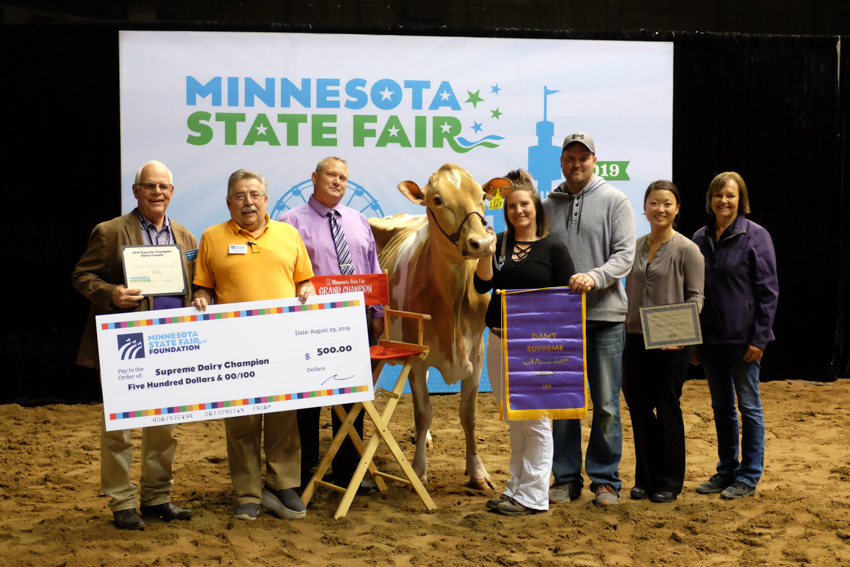
The Foundation provides awards for the Supreme Champion shows. Throughout the fair, Foundation staff and board members join the Minnesota State Agricultural Society Board to present awards to Supreme Champions in the following categories to recognize excellence in agriculture:
- Supreme Beef Champion (bull & female)
- Supreme Dairy Cattle Champion
- Supreme Sheep Champion (ram & ewe, both wool & meat)
- Supreme Draft Horse Champion (stallion & mare & gelding)
- Supreme Swine Champion (boar & gilt)
- Supreme Dairy Goat Champion
Youth Scholarships
In 2020, the Minnesota State Fair awarded its first-ever Christensen Family Scholarship, made possible through an endowment funded by Christensen Farms with the Minnesota State Fair Foundation. The scholarship is made available annually to students who have demonstrated leadership and achievement in youth livestock programs as well as their involvement in the local community.
The Foundation has also provided the funding for twenty Minnesota State Fair Scholarships since 2020 in order to help the State Fair continue with its tradition of supporting youth in their educational pursuits, despite the fair’s 2020 cancellation.
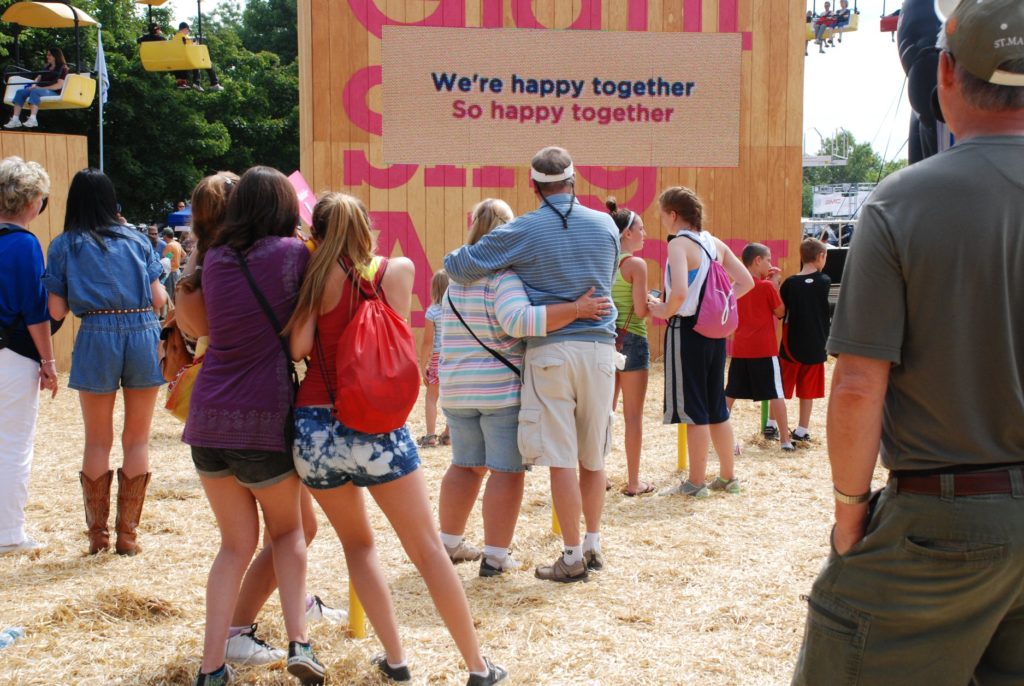
Arts and Culture
Giant Sing Along
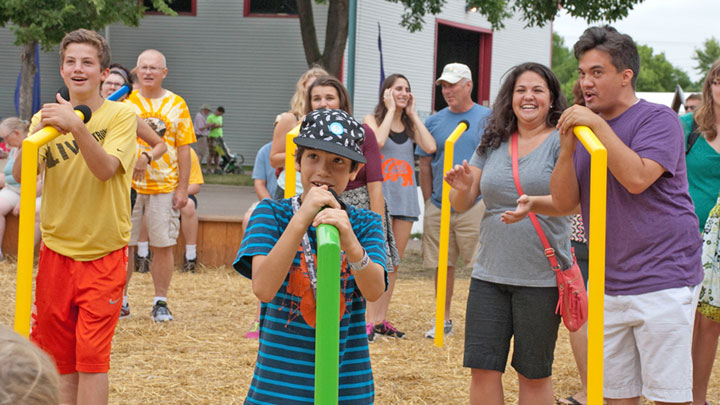
Minnesota State Fair guests are invited to enjoy the magic of singing together in the Giant Sing Along. A field of microphones welcomes everyone to sing their lungs out to annually voted-on hits, karaoke style. A large screen features the lyrics of modern and nostalgic songs. Started as a project of the Foundation, the Giant Sing Along is now an annual tradition for many fair guests.
Studio: Here
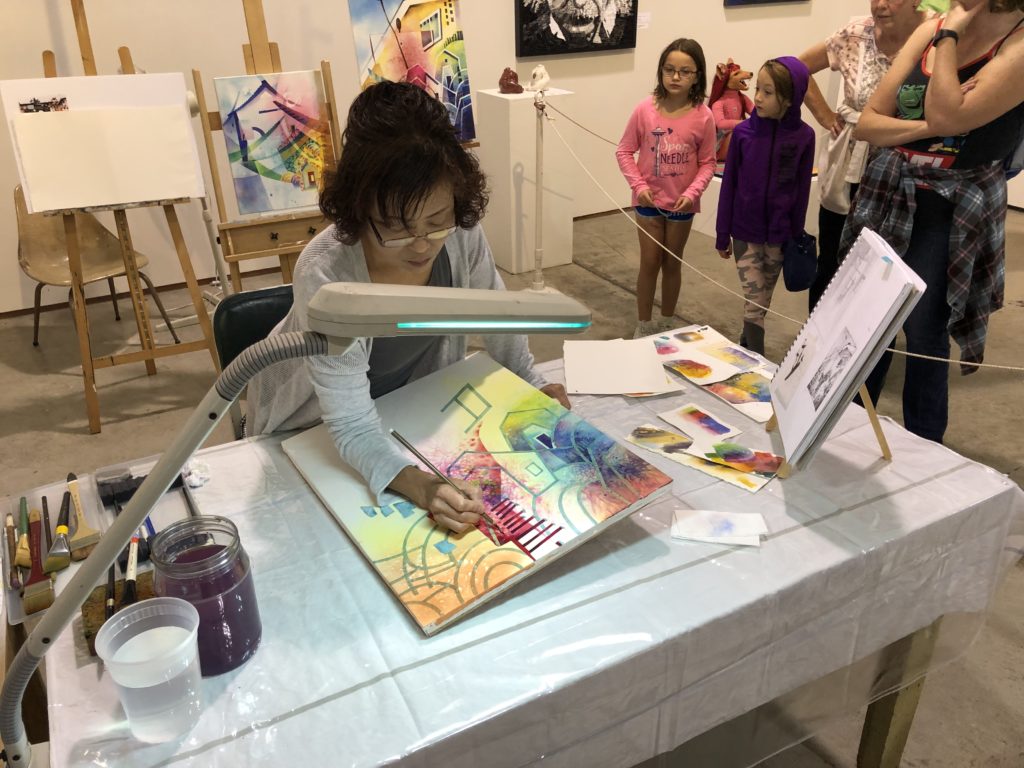
Through generous supporters of the Arts and Culture program area, the Minnesota State Fair Foundation provides stipends to participating Minnesota artists who demonstrate their process in the Studio: Here Exhibition area in the Fine Arts Center.
Arts A’Fair
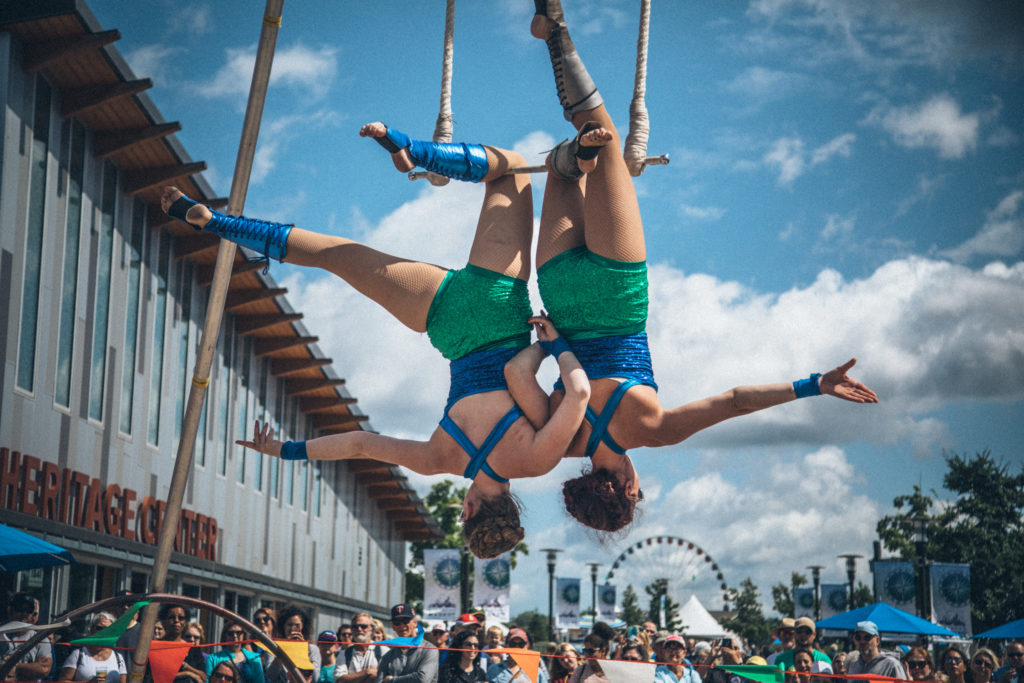
Arts A’Fair showcases Minnesota’s vibrant performing arts scene by featuring pop-up performances every day near the History & Heritage Center, North End Event Center and the Education Building. Foundation donors, including leadership support from the John S. and James L. Knight Foundation, helped launch the first Arts A’Fair. Since 2013, this performing arts program has featured pop-up performances representing a dozen Minnesota theatre, dance and drumming groups.
Creative Activities Building Improvements
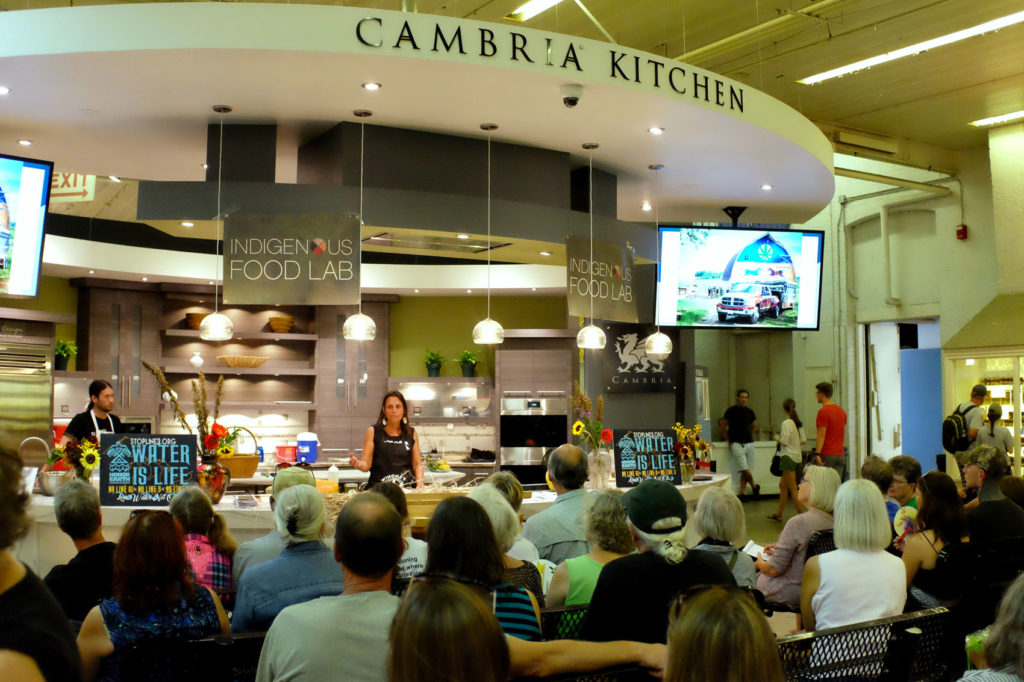
In recent years, the State Fair’s Creative Activities Building has received a variety of improvements benefiting both exhibitors and fair guests. In 2018, the building’s new Cambria Kitchen debuted and is a beautiful frame for demonstrators, cooks, and restaurants to promote local businesses and to cultivate an interest in creating delicious and attractive food.
Building improvements have continued thanks to our donors’ love for competitions and desire to beautify the building. More recent projects have included the replacement of old coolers with a large, modern cooler for cakes, breads, pies and other baked goods, which features deeper glass shelving, allowing for better lighting and easier showcasing of the annual exhibition. Lighting and painting improvement have also been made throughout the building in order to best display the beautiful entries that can be found throughout.
Garden Kaleidoscopes
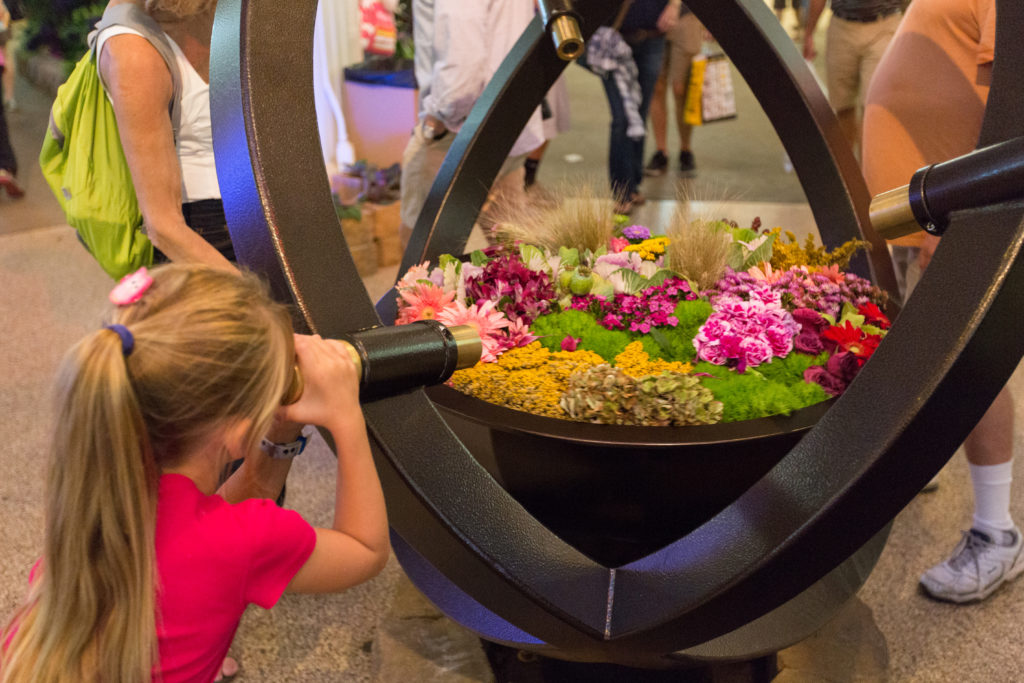
The 2016 State Fair featured the debut of Garden Kaleidoscopes in the Agriculture Horticulture Building that were supported by the Huntington-Eilertson Family Fund, a Legacy Fund endowment established by Cynthia Huntington and Steve Eilertson. The project brought together horticulture, public art and science in an all-ages, hands-on educational experience. Through their endowment fund, the couple embraces support for State Fair arts, crafts, cultural programs and related competitions and facilities.
Indigenous Food Lab at Dan Patch Park presented by the Sioux Chef
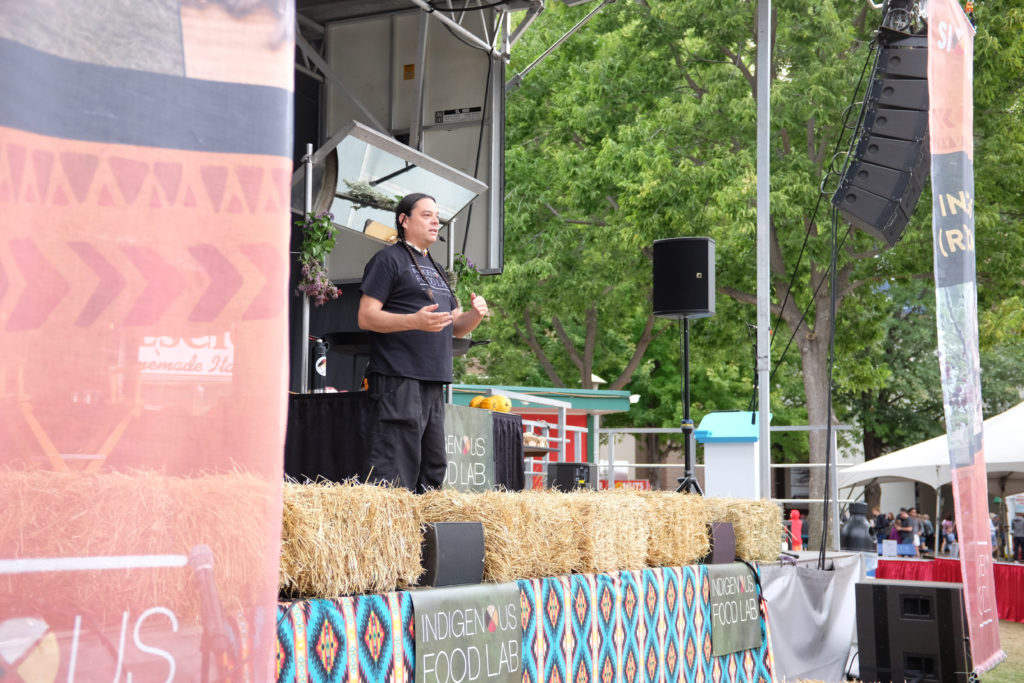
In a brand-new program at the 2019 State Fair, the Foundation provided funds to support James Beard award-winning Chef Sean Sherman curation of a daylong program, The Sioux Chef® Presents the Indigenous Food Lab. Indigenous chefs demonstrated native foods from North America and shared their culinary perspectives and the history, cultural significance, culinary and medicinal uses, and preservation techniques of an array of ingredients and dishes, as well as seed saving, foraging and ethnobotany. Traditional drumming and Native American artifacts from the Minnesota Historical Society also took center stage Sept. 1.
Fine Arts Center
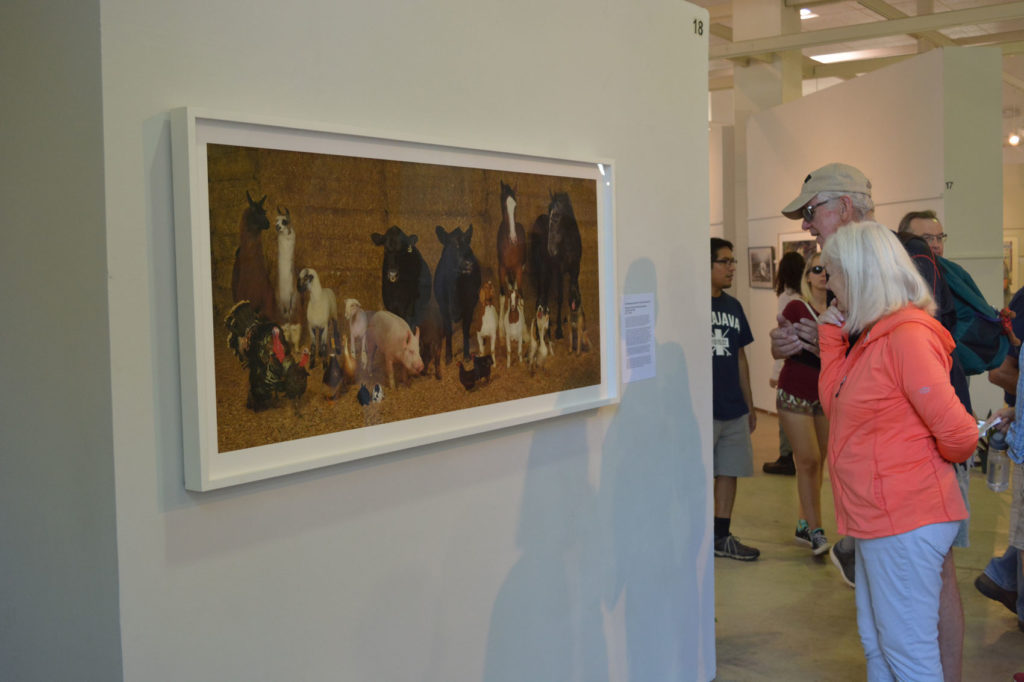
The Fine Arts Center (built in 1907), one of the oldest structures on the fairgrounds, has its own unique character, architecture and historic merit. Preserving and improving this historic structure promotes restoration of quality architecture, energy efficiencies and enhanced functionality. Restoration projects in this building in 2008 were supported by Foundation donors as well as additional improvements since.
Joyful World Mural Park
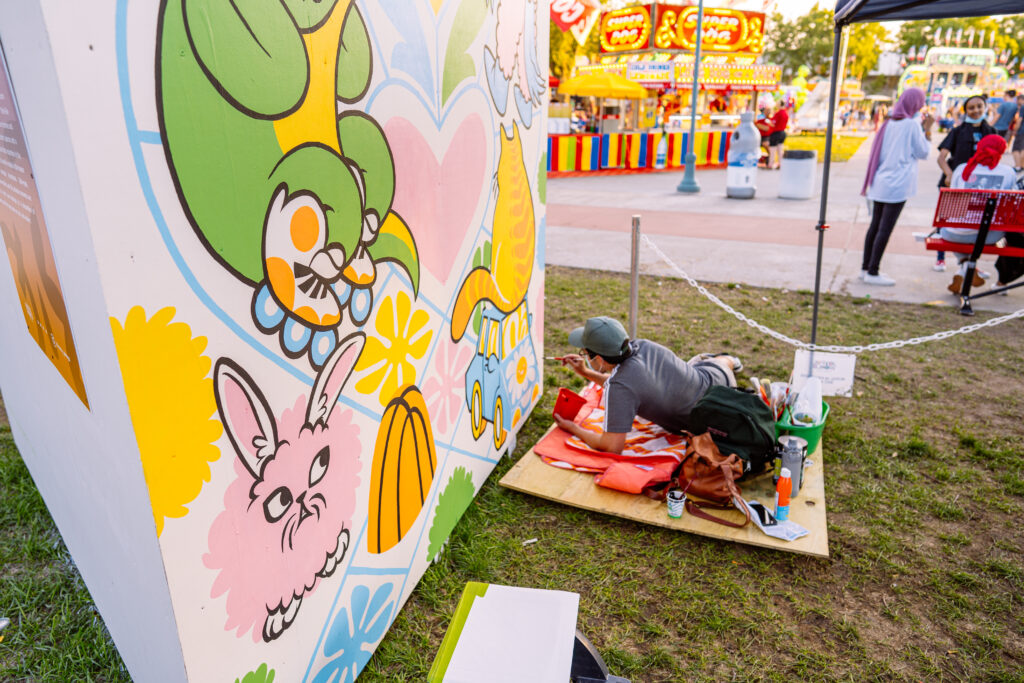
Established in 2021, Joyful World Mural Park is produced in partnership with Forecast Public Art and funded by the Minnesota State Fair Foundation. Through this project, imagination and joy come to life as local artists paint large-scale artworks reflecting the world they want to live in. Throughout the fair’s 12 days, artists are on-site creating their murals.
Public art and sculptures
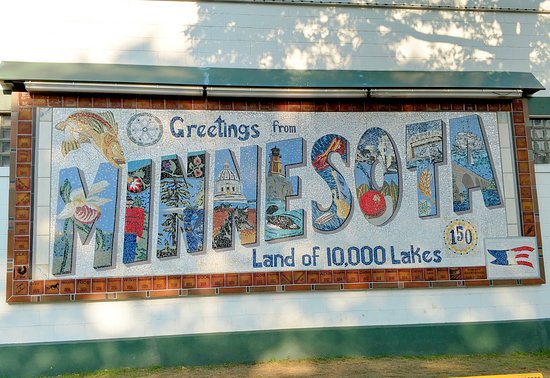
When walking around the fair, there are a number artworks that have been gifted through the Foundation by donors who value the park-like setting of the grounds. Most notable are the metal Prescott sculptures that provide an element of whimsy with their kinetic movement. Another iconic piece of artwork is the Minnesota Mosaic that graces the east side of the Food Building, representing the counties that make up our state and some of the landmarks that are immediately recognized by people from far and wide.
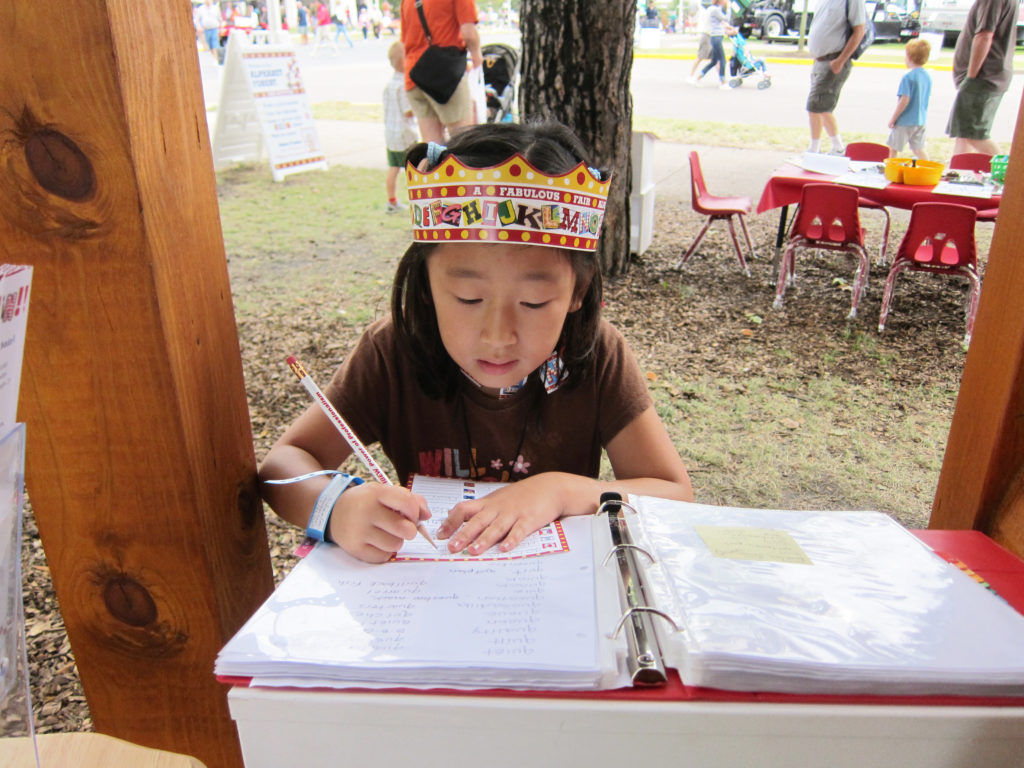
Education
North End
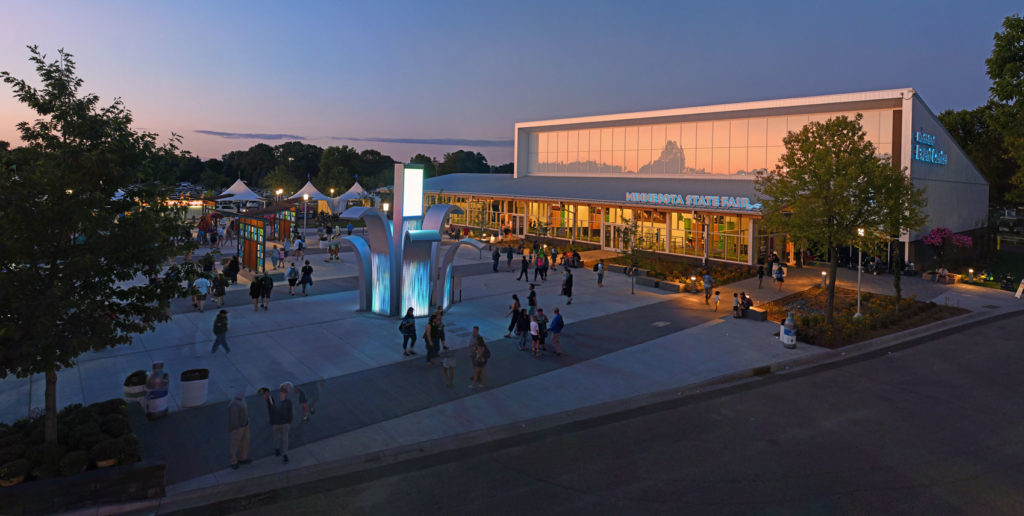
The North End development is the centerpiece of the State Fair’s newest neighborhood. Featuring a major new exhibit facility with a 12,000-square-foot exhibit hall, the North End plaza also features recognizing Minnesota innovations in agriculture, industry and the arts, including the Minnesota Corn Fairstalk recognizing contributions to North End through the Foundation.
Alphabet Forest
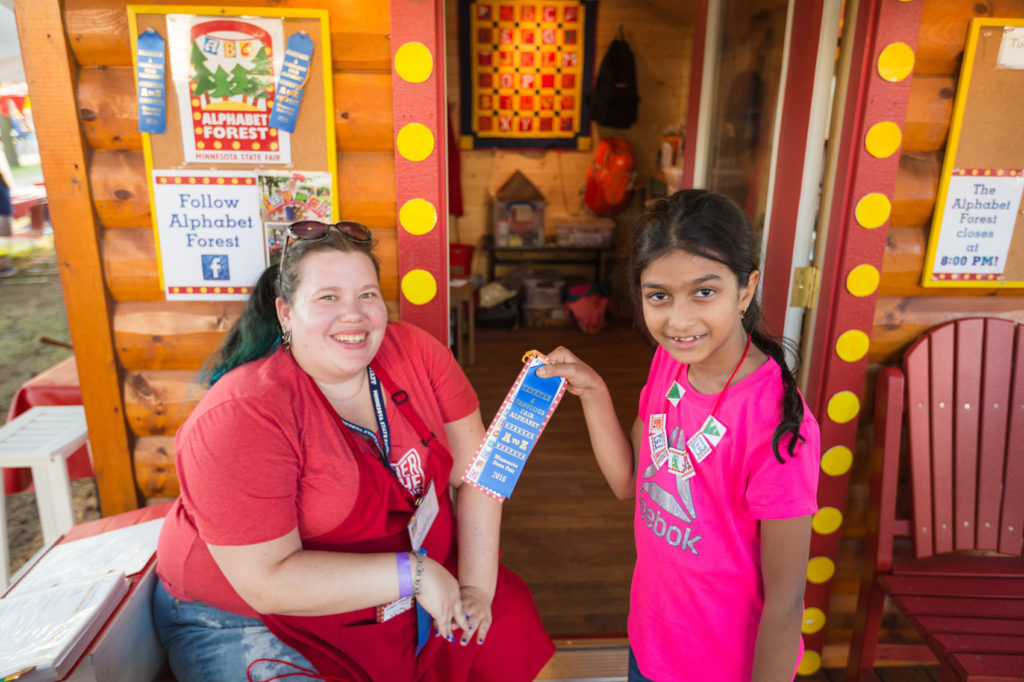
The Alphabet Forest encourages families to engage in reading, vocabulary and storytelling. Thanks to project founder Debra Frasier, MELSA public libraries, Children’s Literature Network and Foundation donor’s commitment to education, families come back year after year to find words, build vocabulary and even take a book break. Educators from across the country have utilized materials and ideas related to the Alphabet Forest.
Math On-A-Stick
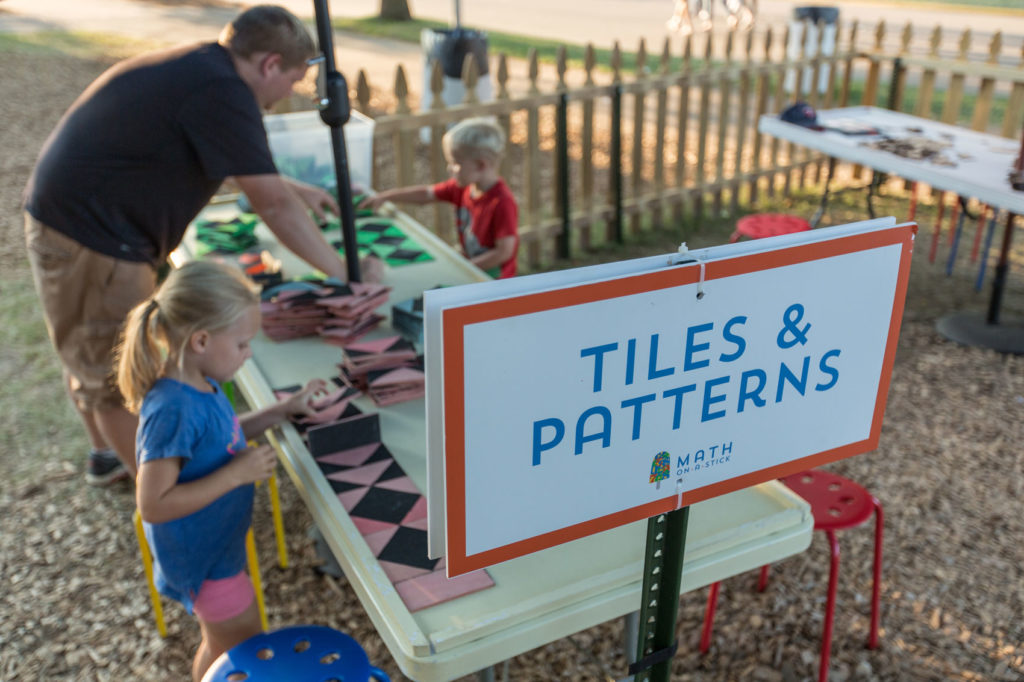
Math On-A-Stick is an interactive project presented by Christopher Danielson and the Minnesota State Fair Foundation that seeks to give positive mathematical interactions based on number and shape. Activities consist of finding numbers at the fair, a “Math-y Midway” and opportunities to meet visiting mathematicians and math artists.
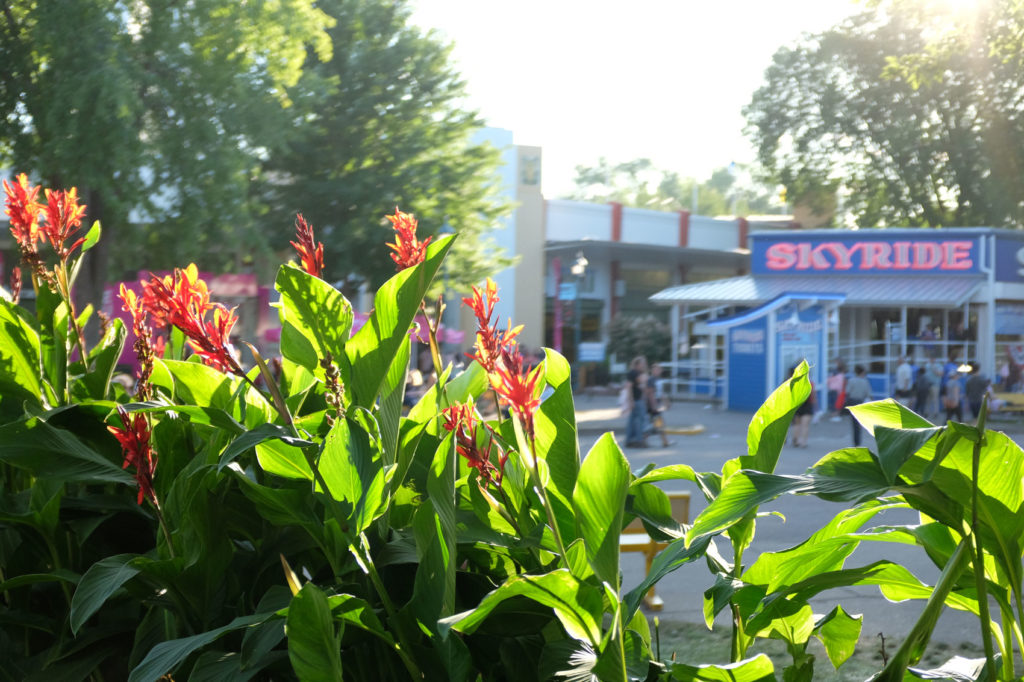
Fairgrounds Environment
Seating and Plazas
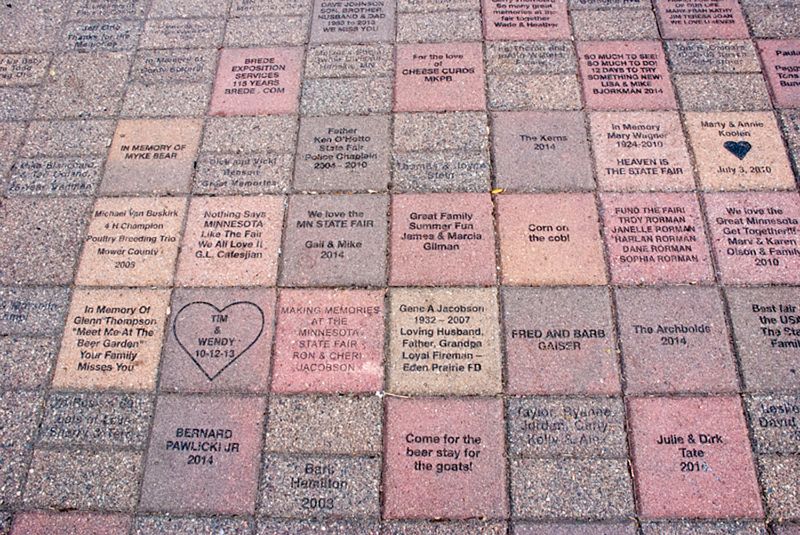
Thanks to the hundreds of Minnesota State Fair Foundation supporters who purchase recognition bricks and benches each year. The State Fair connections, stories and memories on bricks and benches are truly touching. A record of 270 benches were added to the fairgrounds in 2022, bringing the total to nearly 1,900 benches and 6,000 bricks.
Trees
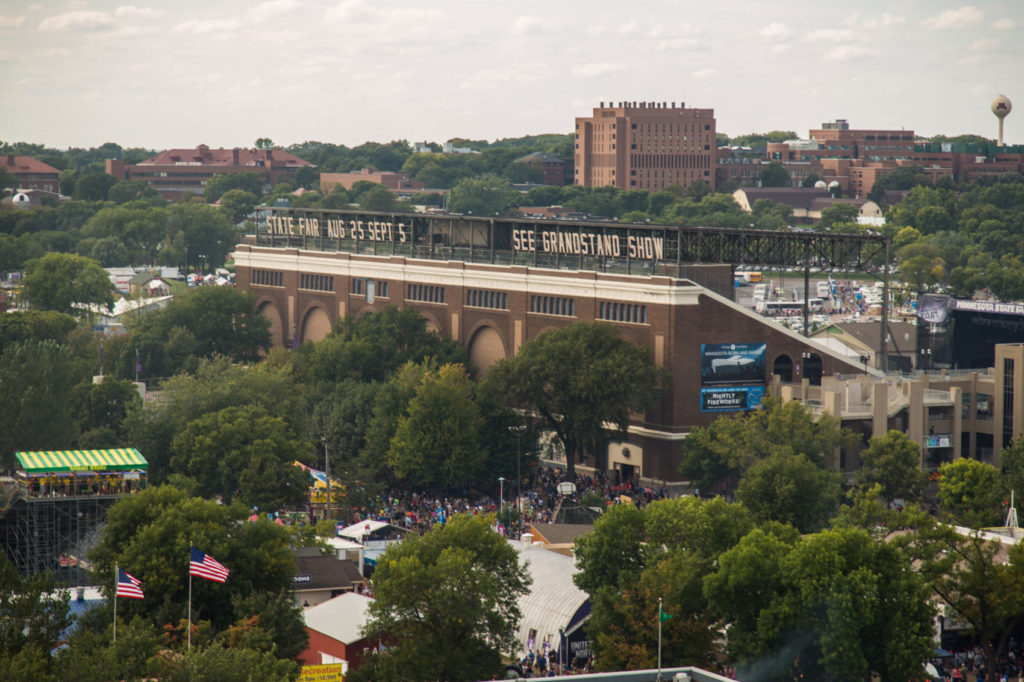
One of the most striking differences between the fairgrounds in Minnesota and other fairs around the country is the prevalence of green space and mature trees on the 322-acre campus. The Foundation has provided funds for new trees, replacement trees, and the care and protection of trees through donations to the Environment Program Area, as well as through an endowment that was established in 2017 by a donor who stated, “The trees are one of the treasures that will live on after all of us.”
Vines on the Fence Lines
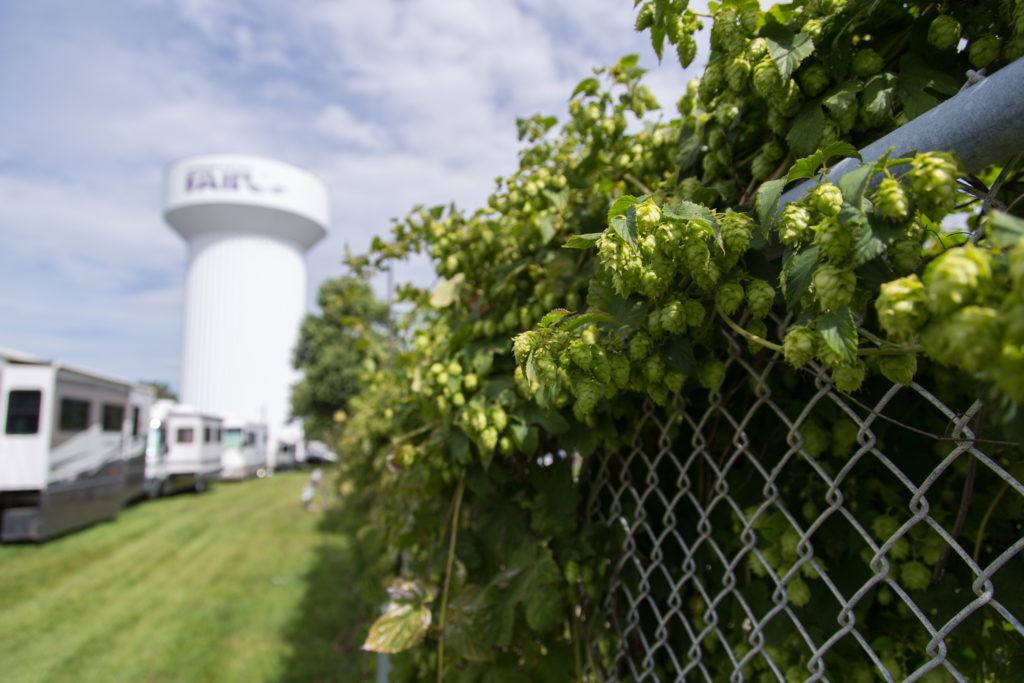
Bailey Nurseries helped the State Fair launch the vine project, donating a variety of vines annually to create green fence lines around the perimeter of the fairgrounds. We continued planting a variety of vines on the perimeter of the fairgrounds. These included Wisteria, Woodbine and Grapes, donated by Bailey Nurseries.
Grandstand Improvements

The historic Grandstand Marquee is a great icon of our nationally-acclaimed Minnesota State Fair. When lit, it signals that the State Fair is just around the corner. By converting the Grandstand Marquee to energy-efficient lighting in 2009. In 2022, all of the lighting on the Grandstand’s first floor was replaced with energy-efficient lighting as well, further impacting the environmental sustainability of the fairgrounds.
With the support of donors to the Fairgrounds Environment program area in 2017, an accessible elevator was added to the west side of the Grandstand to accompany the elevator already in place on the east side.
DNR Park Landscaping
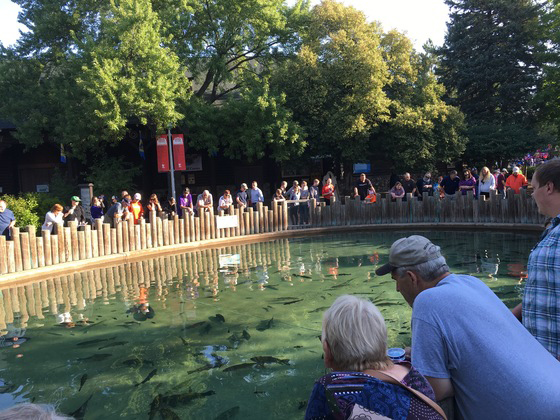
The DNR Park landscaping project in 2014 included reconstructing the fish pond with natural features, installing fencing and paving larger walkways to make the area more handicap accessible and family-friendly.
Living Green Wall
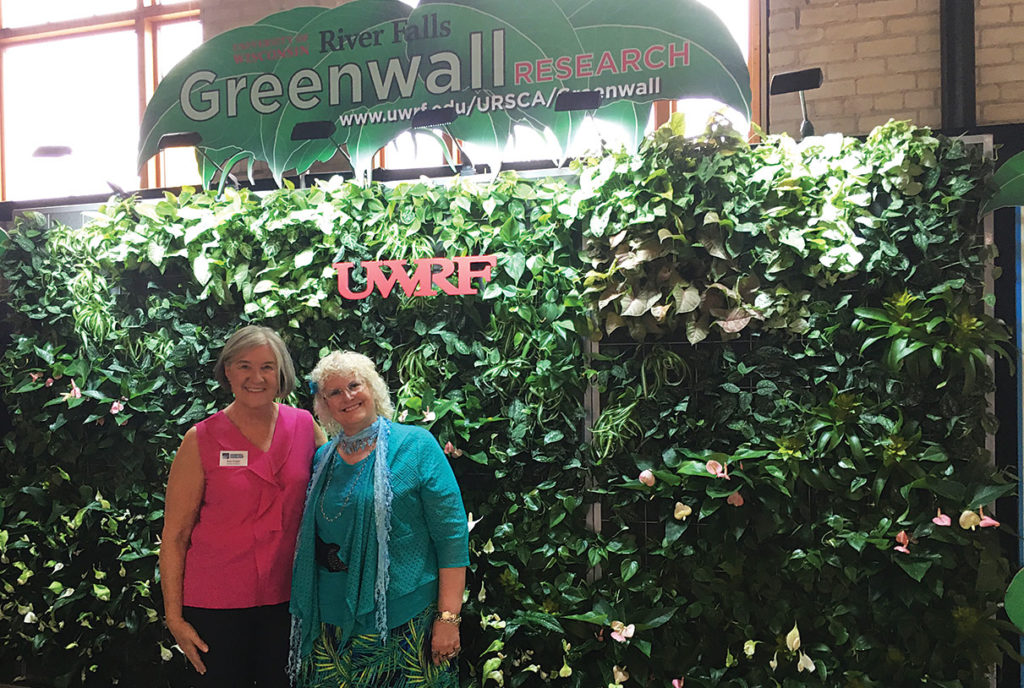
In 2016, the Living Green Wall was a featured project displayed at the Eco Experience. It was created by the University of Wisconsin – River Falls with major funding from Kathy DeLonais through the DeLonais Foundation. The Living Green Wall highlighted study findings that showed foliage can positively impact college students’ well-being and academic performance. The exhibit was staffed all 12 days by students and faculty from UWRF. The Living Green Wall has also been displayed in the Agriculture Horticulture Building.
Hybrid Street Light
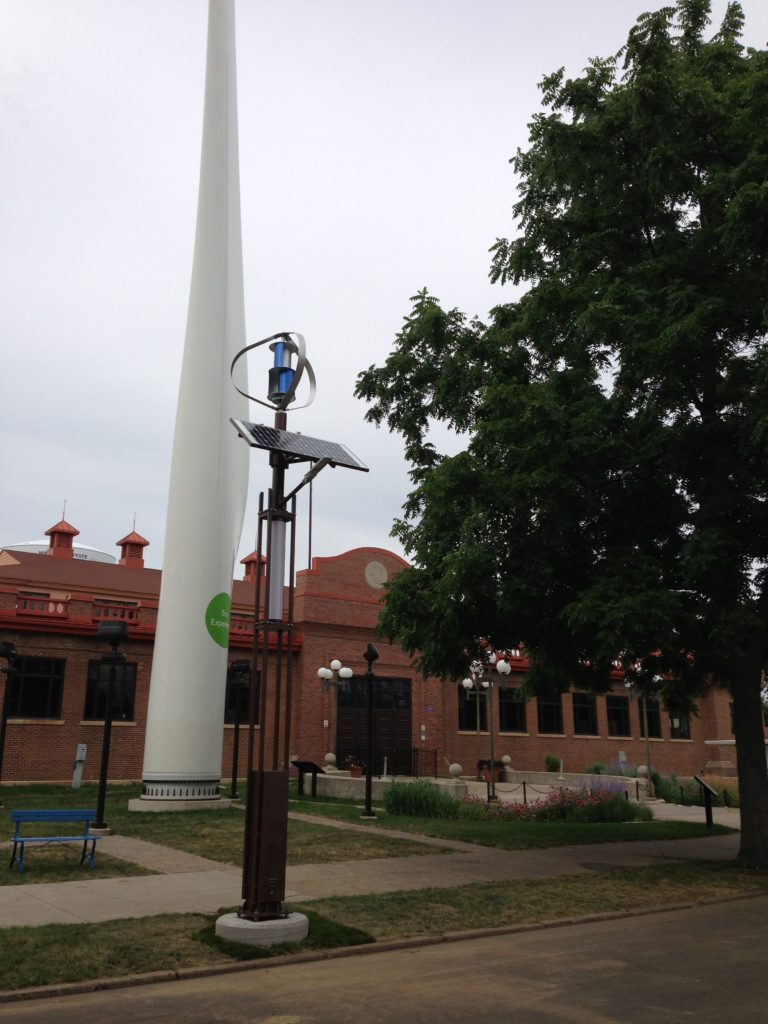
With the support of donors to the Fairgrounds Environment program area in 2013, the Minnesota State Fair added a hybrid streetlight near the Eco Experience at the Progress Center. The light is powered by a dual system of wind and solar energy, and was donated by Real & Renewable.
Recycling at the Fair
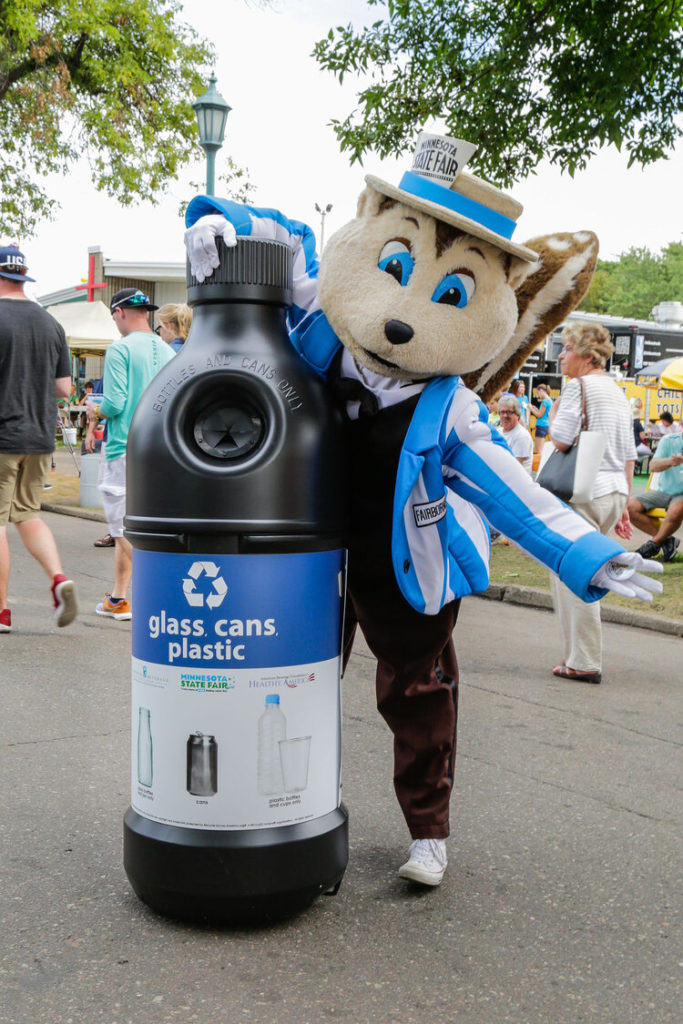
The State Fair has been recycling on a major scale since the mid-1980s. Currently, the fair recycles paper, glass, metal, fluorescent bulbs, vehicle and appliance batteries, antifreeze, beverage containers, automotive oil, tires, grease, manure, construction materials, wood waste, paint, food waste, cardboard, concrete, oil filters, plastic bottles, electronics, laser toner cartridges and more.
As a result of generous supporters of the Fairgrounds Environment program area, we have helped with public education efforts around recycling during the Minnesota State Fair.
Fans at the Ramberg Center
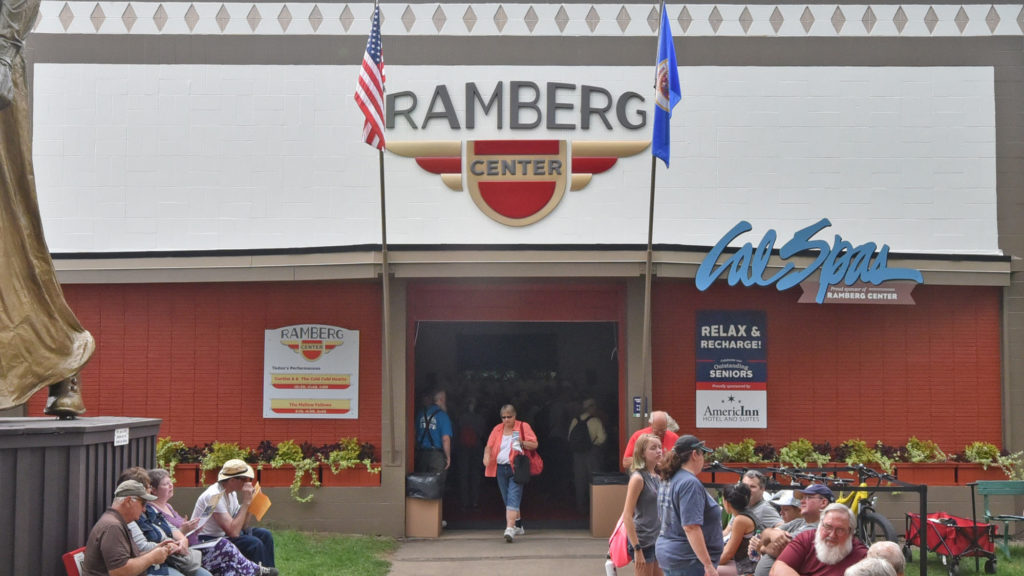
Through a generous donation, the Minnesota State Fair was able to replace the ceiling fans in the Ramberg Center to increase the comfort of fair guests who visit the building for Blue Ribbon BINGO and to visit the Guinness World Record largest award ribbon rosette on display there.
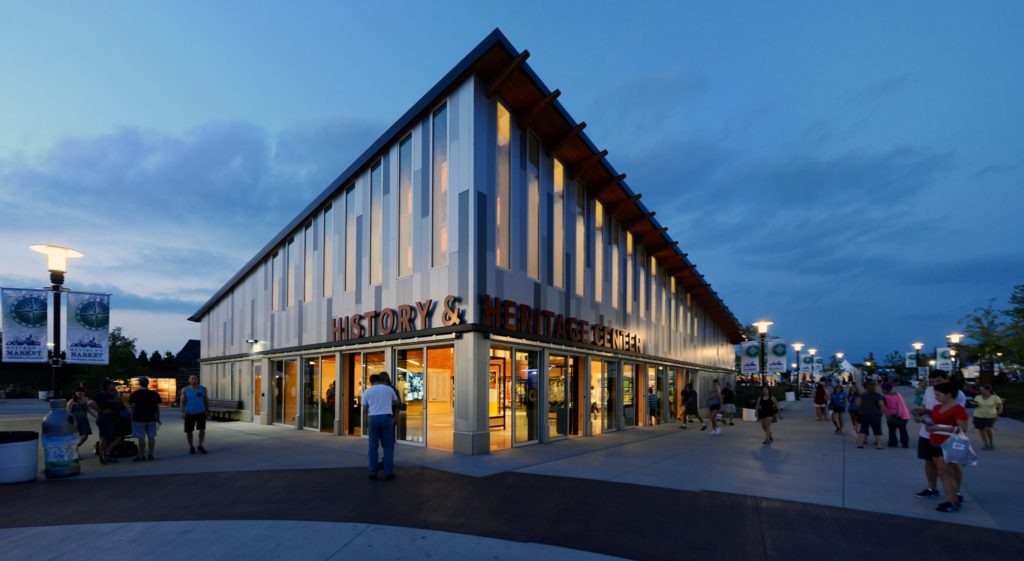
History and Heritage
History & Heritage Center and West End Market
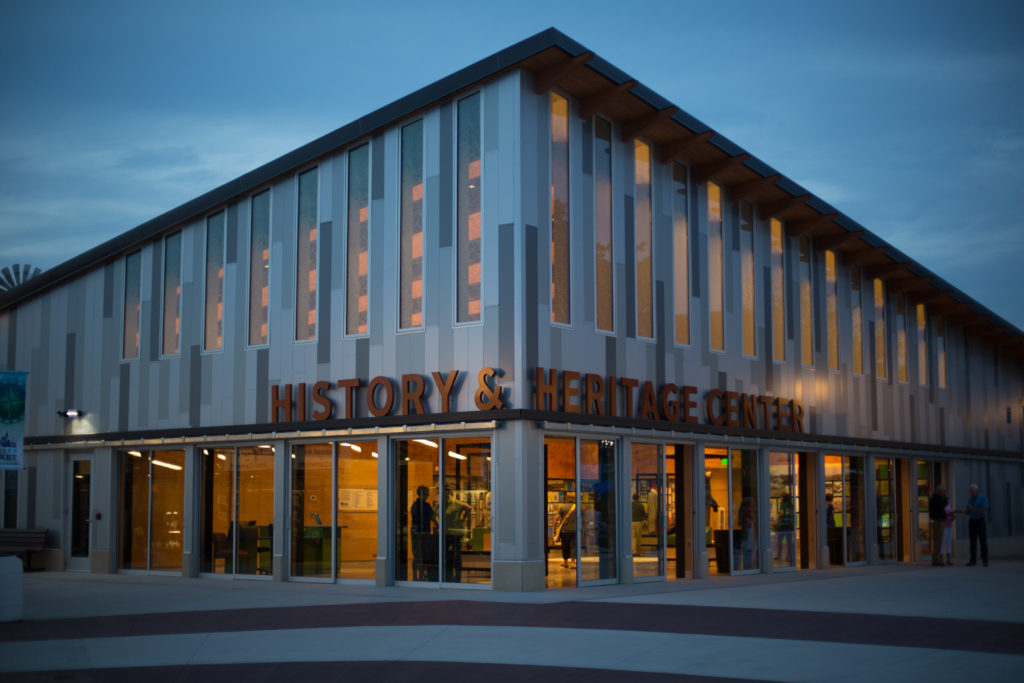
2014 marked the grand opening of the West End Market – the largest redevelopment of the fairgrounds since the 1930s. The new State Fair History & Heritage Center is the featured education attraction of the West End Market. The State Fair and the Minnesota Historical Society developed an engaging exhibition that brings the history of the fair to life for visitors of all ages.
Over 600 donors contributed more than $4 million – the largest amount raised for a special project in the Foundation’s 13-year history. The new State Fair History & Heritage Center was the primary component of the campaign. The campaign also provided funding for the Hugh and Margaret Schilling Amphitheater, the Horton Picnic Pavilions and West End Market benches. These improvements will be enjoyed and appreciated by fairgoers for decades to come.
Lee & Rose Warner Coliseum
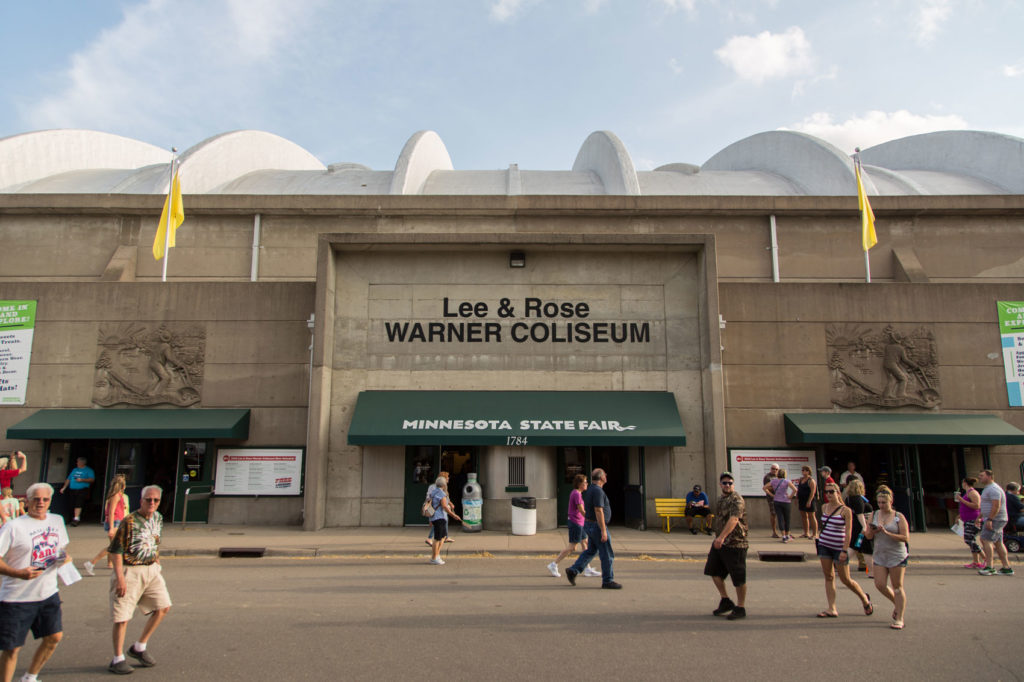
The Lee & Rose Warner Coliseum, which was named in 2006, is home to livestock, equine and trade shows, as well as other events. Lee F. Warner’s nephew, the late Donald McNeely, wanted to find a way to honor his uncle, who served on the Minnesota State Agricultural Society Board. Through a major gift, the Manitou Fund, formerly the Lee & Rose Warner Foundation, stepped forward to significantly improve the Warner Coliseum. Improvements have included replacing exterior windows, installing energy-efficient concourse lighting and adding technology. The Manitou Fund has continued its commitment to the structure and in 2014, the HVAC system was updated and the bowl of the Warner Coliseum is now heated, expanding its year-round use.
J.V. Bailey House
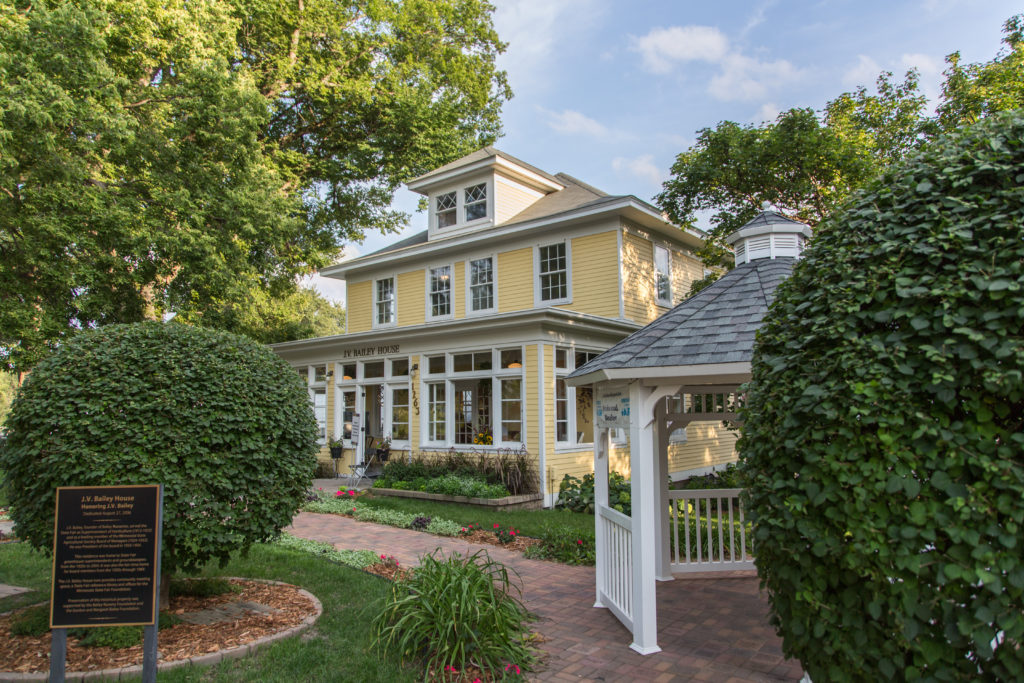
The historic J.V. Bailey House was the residence of greenhouse superintendents and groundskeepers from the 1920s to 2004. It was also the fair-time home for Minnesota State Agricultural Society board members from the 1920s through 1969. Restored with gifts to the State Fair Foundation from the Bailey Nursery Foundation and the Gordon and Margaret Bailey Foundation, the residence was named in honor of J.V. Bailey on August 27, 2006. It now offices the State Fair Foundation.
Minnesota State Fair Archives
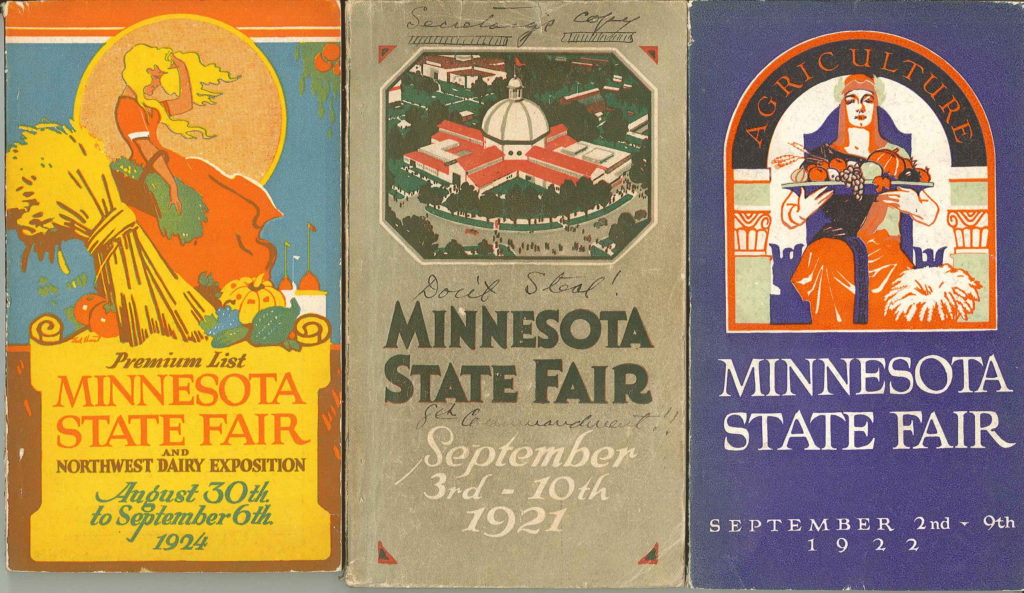
It is important to preserve the past while looking toward the future. Starting in 2008, the Minnesota State Fair archives staff continue to catalog and sort more than a century’s worth of history. The collection is currently made up of tens of thousands of photographs, postcards, maps, correspondence and more. Items are numbered, given a storage location and logged into a database for easy retrieval.
Through the support of History and Heritage donors, State Fair annual reports and competition results were digitally scanned and made available for viewing. Information on concessionaires, political figures, Grandstand productions and much more can be seen. To view the digital Minnesota State Fair annual reports and competition results from 1887 to present, use the digital archives.
Streetcar Arch
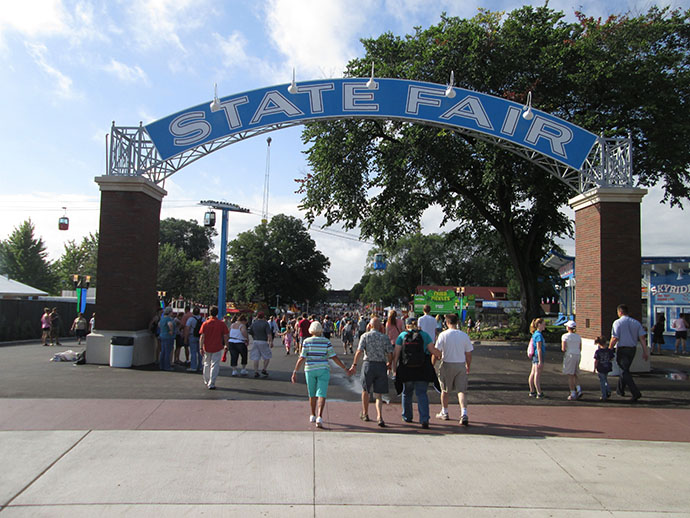
The Streetcar Arch was built as a WPA project in 1934 for the State Fair’s Trolley Loop Gate near Como Avenue. The gate was located on Underwood Street near today’s CHS Miracle of Birth Center, facing south towards Como with streetcars arriving from St. Paul and Minneapolis. From 1934 until 1985 when the sign was removed, 17 million people passed beneath this arch on their way into the fair. Contributions to the Foundation supported the preservation of the arch as part of the History and Heritage Campaign. The restored Streetcar Arch welcomes fair guests at the West End Gate.
State Fair History Walking Tour
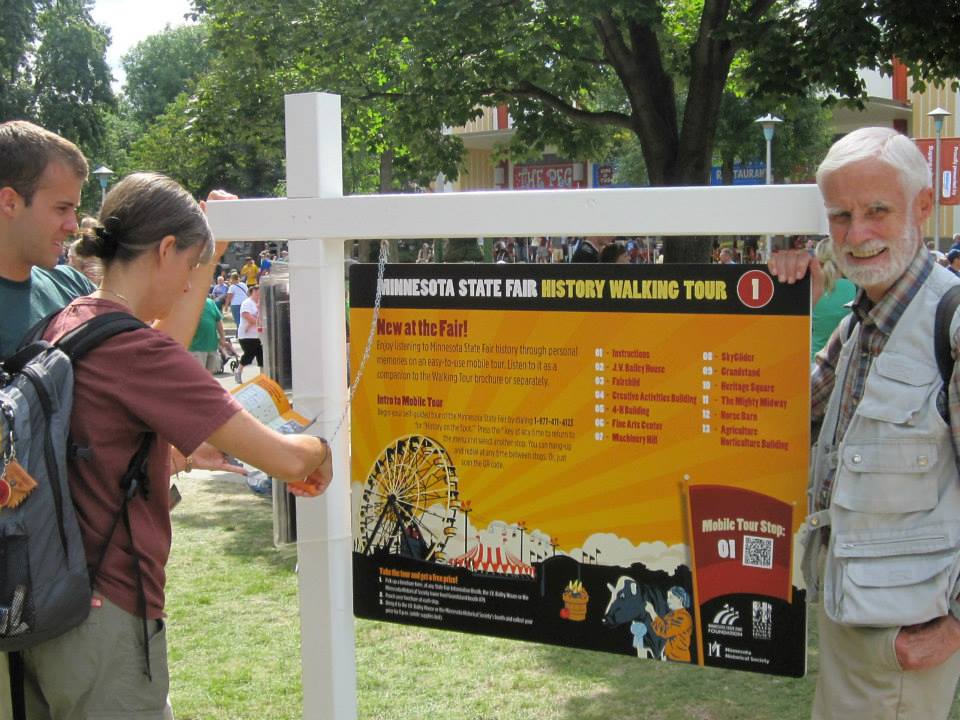
In partnership with the Minnesota Historical Society, the Minnesota State Fair Foundation and Minnesota State Fair offer an outstanding History Walking Tour of the fairgrounds. The walk, funded with Minnesota Legacy Funds, is a two-mile jaunt around the fairgrounds. It is a free, educational activity designed for families and all ages.

